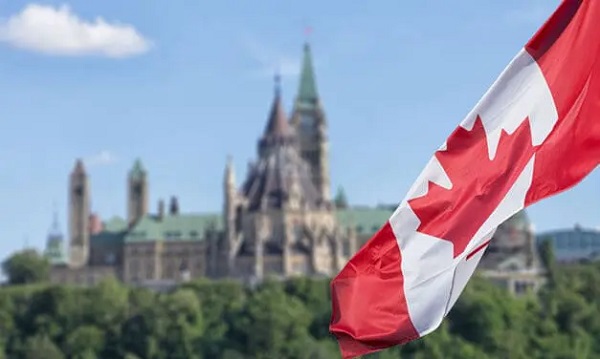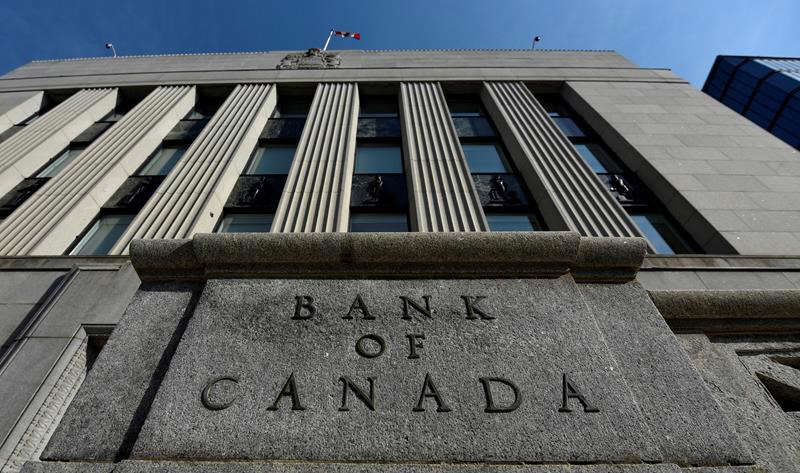Business
Regulatory reform key to Canada’s energy future

This article supplied by Troy Media.
 By Lisa Baiton
By Lisa Baiton
Canada has the resources to lead globally in energy, but outdated rules and investment barriers are holding us back
Canada stands at a pivotal moment. A new federal government offers an opportunity to rejuvenate the economy and rethink our approach to natural
resource development.
Prime Minister Mark Carney’s plan to build Canada into the best-performing economy in the Group of Seven (G7) is achievable, as is his ambition to build from this country’s energy resource-rich foundation. This aligns with the oil and natural gas industry’s calls to play to our strengths in responsible energy development and exports. To succeed, we need a clear, practical strategy that reflects the realities of investment capital in today’s
unpredictable global economy.
Canada has all the ingredients to become the next global energy superpower. What’s missing is the right recipe. Over the past decade, a layering of policies has reduced investor confidence and made Canadian projects less attractive than those in other countries. Billions in capital have shifted to places like the United States, Brazil and Norway, where regulatory processes are clearer, faster and more investor-friendly.
It’s time to rebuild investor confidence and demonstrate that Canada is open for business. That begins with overhauling the regulatory and fiscal frameworks that govern major energy projects. Current regulations are too often unpredictable, excessively long and vulnerable to legal challenges. For example, some Canadian energy projects can take seven to 10 years to gain approval, compared to three to five years in competing jurisdictions. Approval timelines must be firm, reliable and competitive. Projects of national significance need clear, coordinated assessments that uphold environmental integrity while respecting the jurisdictional roles of provincial governments and Indigenous communities. And we must take the politics out of the regulatory process.
It also means rethinking carbon policy. The current system—layered with federal and provincial rules and complex compliance requirements— is inefficient and uncertain. It needs to be reviewed and reformed, together with provinces and industry, to ensure it is competitive with policies in other top oil- and natural gas-producing nations. A model tailored to regional realities and industrial needs, and one that respects provincial jurisdiction, could restore both flexibility and investor confidence. A national policy should drive investment into emissions reduction, not through
production caps, but by simplifying regulation, creating an attractive fiscal environment and protecting export industries while enabling innovation and growth
Let’s be clear: this is not a call to abandon climate goals or environmental commitments. Canadians care deeply about the environment. But they also care about job security, affordable living and Canada’s place in a rapidly evolving global economy. These values are not in conflict. In fact, the Canadian way—our high standards, our innovation, our sense of fairness—can show the world a model of responsible oil and natural gas development.
We must also ensure Indigenous communities are true partners in growth. Expanding Indigenous loan guarantees at scale will help create infrastructure ownership opportunities that generate long-term prosperity. These guarantees enable First Nations to access affordable financing to invest in projects like pipelines and power generation. But such programs will only succeed if Canada is seen as a competitive place to invest. That foundation must come first.
The mood across Canada has shifted. There is broad public support for oil and natural gas development, not just because of the jobs and revenue, but because Canadians understand the role energy plays in our national and economic sovereignty. Recent polling shows most Canadians believe energy development and climate action can go hand in hand, especially when projects support economic growth.
Amid growing instability in the United States—Canada’s biggest competitor for capital—we have a chance to stand out as a stable and trusted economic partner. But this window of opportunity won’t stay open for long.
We must act decisively. That includes eliminating unnecessary barriers such as production caps and embracing investment in technologies that reduce emissions while growing output.
Canadians are ready. Industry is ready. The time has come to build.
Lisa Baiton is President and CEO of the Canadian Association of Petroleum Producers.
Troy Media empowers Canadian community news outlets by providing independent, insightful analysis and commentary. Our mission is to support local media in helping Canadians stay informed and engaged by delivering reliable content that strengthens community connections and deepens understanding across the country
Business
Loblaws Owes Canadians Up to $500 Million in “Secret” Bread Cash

Yakk Stack
(Only 5 Days Left!) Claim Yours Before It’s GONE FOREVER
Hey, all.
Imagine this…you’re slicing into that fresh loaf from Loblaws or just making a Wonder-ful sammich, the one you’ve bought hundreds of times over the years, and suddenly… ka-ching!
A fat check lands in your mailbox.
Not from a lottery ticket, not from a side hustle – from the very store that’s been quietly owing you money for two decades of illegal price fixing.
Sound too good to be true?
It’s real.
It’s court-approved.
And right now, on December 7, 2025, you’ve got exactly 5 days to grab your share before the door slams shut. Don’t let this slip away – keep reading, feel that spark of possibility ignite, and let’s get you paid.
Back in 2001, you were probably juggling work, kids, or just surviving on that weekly grocery run. Little did you know, while you were reaching for the President’s Choice white bread or those golden rolls, Loblaws and their cronies were playing a sneaky game of price-fixing. They jacked up the cost of packaged bread across Canada – every loaf, every bun, every sneaky sandwich slice. For 20 years. From coast to coast to coast.
And now…the courts have spoken. $500 million in settlements to make it right. That’s not pocket change – that’s your money, recycled back into your life.
Given the number of people who will be throwing in a claim…this ain’t gunna be life-changing cash…but also, given the cost of food in Canada, it’s better than sweet fuck all, which you will receive by NOT doing this.
If you’re a Canadian resident (yep, that’s you, unless you’re in Quebec with your own sweet deal), and you’ve ever bought bread for your family – not for resale, just real life – between January 1, 2001, and December 31, 2021… you’re in.
No receipts needed.
No fancy proofs.
Just you, confirming your story, and boom – eligible.
Quick check: Were you under 18 back then?
Or an exec at Loblaw?
Nah, skip it.
But for the rest of us everyday schleps…Jackpot.
Again…the clock’s ticking on this.
Claims opened on September 11, 2025, and slam shut on December 12, 2025.
That’s this Friday.
Payments roll out in 2026, 6-12 months later, straight to your bank or mailbox.
Here’s what you need to do…
- Breathe deep, click → HEREQuebec frens →HERE
- 10 second form that’s completed by your autofill…30 seconds off of a mobile device.
- Hit submit and wait for that sweet cash to hit your account.
Again…this won’t be life saving money and most certainly ain’t gunna hit your account before Christmas.
And before you go out an Griswald yourself into a depost on pool in the backyard…you may only end up with enough cash for the Jam-of-the-Month…the gift that truly does give, all year round…just be a little patient.
If you end up with a couple of backyard steaks in time for summer…
Some treats for the children or grandchildren…
Maybe just a donation to the foodbank…
This is what’s owed to you. Your neighbors. Friends. Family.
Take advantage!
Banks
To increase competition in Canadian banking, mandate and mindset of bank regulators must change

From the Fraser Institute
By Lawrence L. Schembri and Andrew Spence
Canada’s weak productivity performance is directly related to the lack of competition across many concentrated industries. The high cost of financial services is a key contributor to our lagging living standards because services, such as payments, are essential input to the rest of our economy.
It’s well known that Canada’s banks are expensive and the services that they provide are outdated, especially compared to the banking systems of the United Kingdom and Australia that have better balanced the objectives of stability, competition and efficiency.
Canada’s banks are increasingly being called out by senior federal officials for not embracing new technology that would lower costs and improve productivity and living standards. Peter Rutledge, the Superintendent of Financial Institutions and senior officials at the Bank of Canada, notably Senior Deputy Governor Carolyn Rogers and Deputy Governor Nicolas Vincent, have called for measures to increase competition in the banking system to promote innovation, efficiency and lower prices for financial services.
The recent federal budget proposed several new measures to increase competition in the Canadian banking sector, which are long overdue. As a marker of how uncompetitive the market for financial services has become, the budget proposed direct interventions to reduce and even eliminate some bank service fees. In addition, the budget outlined a requirement to improve price and fee transparency for many transactions so consumers can make informed choices.
In an effort to reduce barriers to new entrants and to growth by smaller banks, the budget also proposed to ease the requirement that small banks include more public ownership in their capital structure.
At long last, the federal government signalled a commitment to (finally) introduce open banking by enacting the long-delayed Consumer Driven Banking Act. Open banking gives consumers full control over who they want to provide them with their financial services needs efficiently and safely. Consumers can then move beyond banks, utilizing technology to access cheaper and more efficient alternative financial service providers.
Open banking has been up and running in many countries around the world to great success. Canada lags far behind the U.K., Australia and Brazil where the presence of open banking has introduced lower prices, better service quality and faster transactions. It has also brought financing to small and medium-sized business who are often shut out of bank lending.
Realizing open banking and its gains requires a new payment mechanism called real time rail. This payment system delivers low-cost and immediate access to nonbank as well as bank financial service providers. Real time rail has been in the works in Canada for over a decade, but progress has been glacial and lags far behind the world’s leaders.
Despite the budget’s welcome backing for open banking, Canada should address the legislative mandates of its most important regulators, requiring them to weigh equally the twin objectives of financial system stability as well as competition and efficiency.
To better balance these objectives, Canada needs to reform its institutional framework to enhance the resilience of the overall banking system so it can absorb an individual bank failure at acceptable cost. This would encourage bank regulators to move away from a rigid “fear of failure” cultural mindset that suppresses competition and efficiency and has held back innovation and progress.
Canada should also reduce the compliance burden imposed on banks by the many and varied regulators to reduce barriers to entry and expansion by domestic and foreign banks. These agencies, including the Office of the Superintendent of Financial Institutions, Financial Consumer Agency of Canada, Financial Transactions and Reports Analysis Centre of Canada, the Canada Deposit Insurance Corporation plus several others, act in largely uncoordinated manner and their duplicative effort greatly increases compliance and reporting costs. While Canada’s large banks are able, because of their market power, to pass those costs through to their customers via higher prices and fees, they also benefit because the heavy compliance burden represents a significant barrier to entry that shelters them from competition.
More fundamental reforms are needed, beyond the measures included in the federal budget, to strengthen the institutional framework and change the regulatory mindset. Such reforms would meaningfully increase competition, efficiency and innovation in the Canadian banking system, simultaneously improving the quality and lowering the cost of financial services, and thus raising productivity and the living standards of Canadians.
-

 MAiD1 day ago
MAiD1 day agoFrom Exception to Routine. Why Canada’s State-Assisted Suicide Regime Demands a Human-Rights Review
-

 Automotive2 days ago
Automotive2 days agoPower Struggle: Governments start quietly backing away from EV mandates
-

 Business1 day ago
Business1 day agoCarney government should privatize airports—then open airline industry to competition
-

 Business2 days ago
Business2 days agoNew Chevy ad celebrates marriage, raising children
-

 Business1 day ago
Business1 day agoWhat’s Going On With Global Affairs Canada and Their $392 Million Spending Trip to Brazil?
-

 Censorship Industrial Complex2 days ago
Censorship Industrial Complex2 days agoA Democracy That Can’t Take A Joke Won’t Tolerate Dissent
-

 Energy1 day ago
Energy1 day agoCanada following Europe’s stumble by ignoring energy reality
-

 Censorship Industrial Complex2 days ago
Censorship Industrial Complex2 days agoFrances Widdowson’s Arrest Should Alarm Every Canadian








